What are Red Spider Mites?
Red spider mites (Tetranychus Urticae) are a type of small 0.5mm mite from the Tetranychidae family, also known as Spider Mites, capable of spinning webs which is why they’re often confused with spiders. They can be brown and deep red depending on the stage they’re in. They tend to hide on the underside of the leaves and in their webs, allowing them to trap natural predators and protect themselves from certain types of acaricides.
Over the past few years, spider mites have been occurring more often in cannabis grows; they used to die off when winter rolled around outdoors. However, they can now stick around all year round indoors and in greenhouses, and combined with the increasing temperatures of our planet they can last for all year round anywhere they want, getting stronger each and every year.
Spider Mites and Cannabis Plants
Spider mites don’t produce large markings on your plants unlike other infestations such as caterpillars, slugs or snails. However, spider mites can bite your plants leaves hundreds of times until they’re absolutely covered in small grey dots; they absorb sap and empty out your leaves. When this infestation is in its most advanced stage it can cover buds with its webbing which can cause you to lose quite a lot of harvest.
Preventing and getting rid of spider mites ASAP is absolutely necessary, especially if you’ve seen any signs; it can develop and thrive in no time at all if found in the right conditions, colonizing entire plants within days.
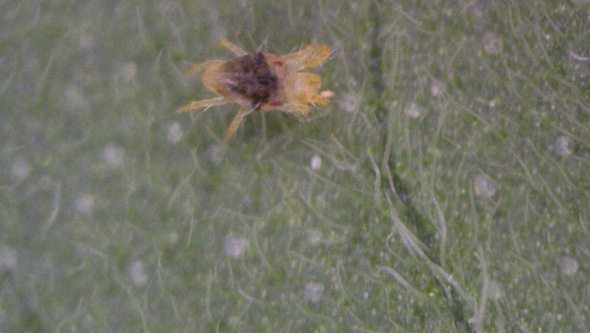
How to Identify Red Spider Mites
- Even though these mites are super small, they’re easy to identify due to their greenish brown colour or intense red colour and their slow movement along the plant. Sometimes, in outdoor grows, another similar mite may appear but it won’t damage your plants; you can tell them apart because they move much faster than red spider mites and they don’t leave any markings on your plant.
- Red spider mites can be found on both sides of the leaves; the upper part is where they feed from and they lay their eggs along the bottom, just like white flies.
- Red spider mites leave small white or grey dots along the leaves of your plants as they feed.
- If you run your finger over the leaf where you think there might be spider mites and it goes a sort of red colour, it’s most likely red spider mites.
- In advanced infestations it can also spin webs on the leaves, stems and flowers.
- The best way to identify this inset infestation is by using a x100 microscope or magnifying glass on the underside of the leaves. Spider mites in their larvae state have three pairs of legs, and in their adult state they have 4 pairs; they’re easily identifiable.
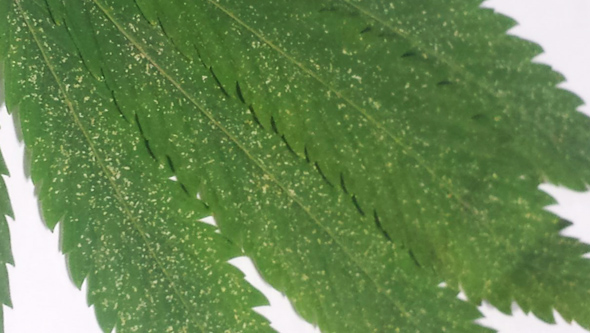
Red Spider Mite Infestation Characteristics
- Red Spider Mites are extremely common in outdoor grows, indoor grows and greenhouse grows. They do well in warm climates, which is why they start to shop up during spring/summer.
- Red spider mites are incredibly sturdy and can live out winter in other plants, leaves and vegetation. Clean all of your flowerpots and growing material before and after growing in order to avoid infestations going from one grow to another. Don’t reuse substrates, especially if you’ve had insect infestations previously.
- In the middle of summer they can complete their life cycle in just over a week; they can easily spread rapidly and can become quite a problem. Plus, this coincides with your plants’ flowering period so you’ll need to take preventive measures in order to make sure you can successfully harvest healthy cannabis plants.
- Every female red spider mite can lay between 3 and 5 eggs a day, which makes it easy for an infestation to suddenly appear. When they can no longer feed off of the plant, they group up on the edges of the leaves in order to move around with the wind to other leaves and plants.
- In grows with little ventilation, insufficient watering and/or humidity, or grows where heat can accumulate like glassed greenhouses, red spider mites can really flourish and breed quite heavily if the conditions are met.
Red Spider Mite Life Cycle
Red spider mites goes through the following stages: egg (2 – 7 days), larva (2 – 3 days), proto and deutonymph (5 – 7 days) and adult (10 – 30 days).
- In indoor grows they can appear at almost any time, especially if you bring new plants in and they’re infected.
- In outdoor grows they tend to appear in spring/summer, once it begins to heat up. They reproduce easily in temperatures over 15 – 20°C.
- They prefer areas that are warm, dry and poorly ventilated.
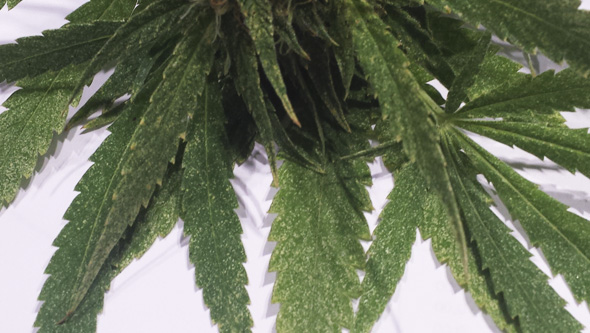
Red Spider Mite Phases
- Egg: the eggs that red spider mites lay tend to be on the underside of the leaves, in small groups. One red spider mite can lay up to 100 eggs over their entire life cycle. Eggs take about 2 – 7 days to hatch depending on the environmental conditions in which they’re in.
- Larva: this is the most fragile period spider mites go through, as they aren’t fully developed yet. This is the perfect time to get rid of spider mites, as they’re easier to get rid of, although it can be difficult to catch them in this stage. It’s much easier to spot them when they’re adults or are in various different stages on your plant. During this stage, red spider mites have six legs. The larva stage lasts just 2 – 3 days.
- Proto and deutonymph: during the protonymph and deutonymph stages this insect grows an additional two legs. This process takes about 7 days.
- Adult: these are the most dangerous for your cannabis plants; females can lay around 5 eggs a day and up to 100 during their entire life cycle, making them the main causes of the infestation. Adults can live for 10 – 30 days depending on the conditions and how strong they are.
Spider Mite Damage
- Leaf damage: they can bite your plants’ leaves in hundreds of places, which can easily be seen as small white dots all over your plant. This causes permanent leaf discoloration.
- Plant stress: your plants are under a lot of stress and can end up losing leaves and slowing their growth or flowering depending on how advanced the insect infestation is.
- Less quantity and quality: your plants will produce less yield of lower quality; buds end up smaller and may end up covered in spider webs.
- Bad-tasting buds: your flowers may end up damaged beyond repair with illness due to the bites and insect excrement, which can make for a nasty flavour.
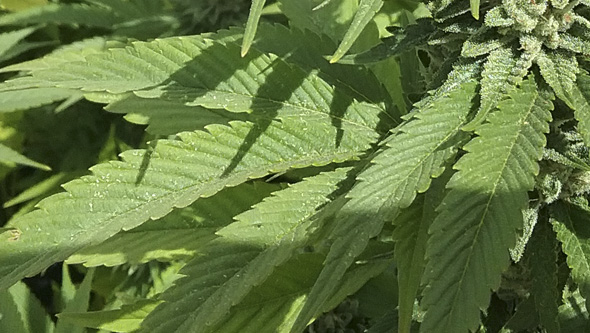
How to Prevent Red Spider Mites in Cannabis
As with all infestations, we recommend preventing it rather than getting rid of it when it’s too late. There are all types of tips and tricks when it comes to getting rid of red spider mites:
- Avoid excess nitrogen when fertilizing; this attracts spider mites and other infestations.
- When growing outdoors, keep your cannabis plants far away from other plants; many types of spider can stick around during the winter in other plants.
- When growing indoors make sure the room is properly ventilated to avoid excess heat which can make it easier for an infestation to appear. If you want to know more about ventilation and air extraction, check out our post about ventilation for indoor cannabis grows.
- High humidity isn’t good for this insect, which is why they tend to go to week or dried out plants.
- Make sure to be as hygienic as possible; change your clothes before entering your grow room.
- Check your plants periodically to check if they have adult red spider mites, eggs, etc. Check the undersides of the leaves and keep in mind that they tend to bunch together.
- Use Bio Protect by GHE or Bio Protect by Green Hope to strengthen and protect your plants organically.
- You can also use bio preventives such as Cannacure or Leaf Coat, which form a film over your plants’ leaves which makes it hard to the insects to get at and reduces stress in your plants.
- If you’re using homemade compost or you’re adding manure to your plants, make sure that they have been properly fermented and do not contain insects.
- If you’re just finishing up your grow and have had red spider mites, you’re going to want to make sure that they haven’t stuck around. You can use Solfac Automatic Forte to get rid of any stragglers (toxic product, read instructions well).
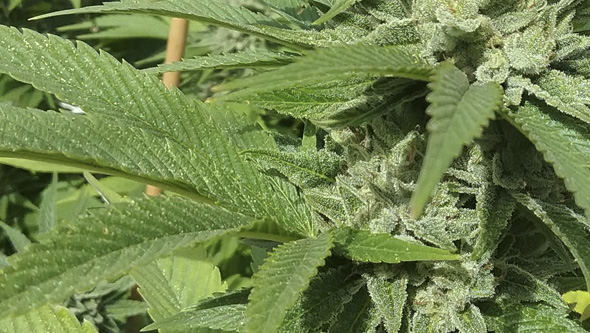
Getting Rid of Red Spider Mites During Growth
Once you see signs of infestation in your plants, all you have left to do is to fight it off as best you can in order to get rid of it as soon as possible. During the growth stage there are more ways to efficiently get rid of this infestation as your plants are smaller and you can spray them without damaging buds. You can use bio and chemical acaricides.
Bio insecticides for growth
- If the infestation is present during the growth period, we recommend using insecticidal soap such as Mobet alongside organic pyrethrins such as Spruzit, which contains rapeseed oil which asphyxiates red spider mite eggs.
- You can also use bio acaricides designed specifically for red spider mites such as Plant Vitality by BAC.
- Another great option when it comes to getting rid of red spider mites is to treat your plants suing natural Elosal sulphur which also works against fungi such as oidium (mildew).
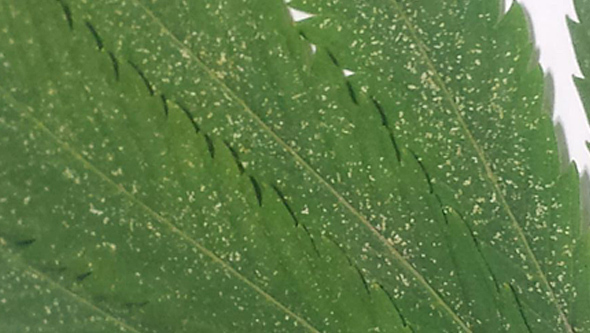
Chemical Insecticides for Growth
If you have an indoor grow and you’ve had a recent insect infestation, you can guarantee to be rid of it by using Solfac Automatic Forte, which automatically sprays the room. Make sure to carefully read the instructions.
Getting Rid of Red Spider Mites During Flowering
During the flowering stage in cannabis plants you can only use bio acaricides; chemicals stick around for much too long in the plant and it could be dangerous to use them at this stage. You can also use natural predators to get rid of the infestations both indoors and outdoors.
Bio Insecticides for Flowering
- During the flowering period is the worst possible moment for this infestation to appear, so you’ll need to act fast and treat your plants correctly in order to avoid adding issues.
- To fight off red spider mites you can use bio acaricides such as Spruzit which can kill eggs. You can also use it alongside insecticidal soap such as Mobet.
- Another highly efficient acaricide is Plant Vitality.
- Make sure to check on your plants daily, especially the underside of the leaves. In order to manually get rid of adults, larvae, protonymphs and eggs, you can use a solution of water and the three previously mentioned products in the manufacturer’s recommended proportions; in order to do this you’ll need to use a sponge or soaked cotton on the underside of the leaves.
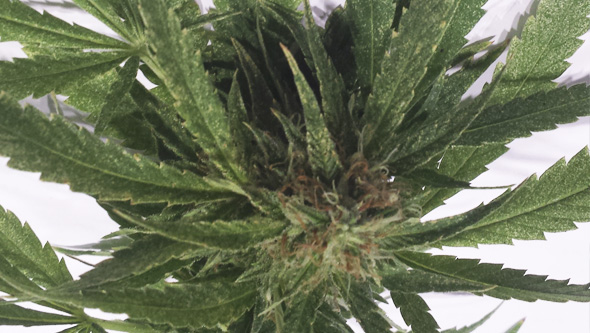
General Advice
Keep in mind that red spider mites have numerous natural enemies. Some of the easiest to find are phytocide mites known as Phytoseiulus Persimilis and Amblyseius Californicus; you can also use Feltiella Acarisuga, a type of fly larva. Check with our team of experts if you’re looking to get natural predators to fight any type of insect infestation.
Remember:
- Red spider mites tend to colonize one plant and move on to another when they feel threatened. If you find an infested plant, move it away from the rest of your plants and treat them all using acaricide.
- If you suspect that you have an infestation you should inspect your plants daily and get rid of any eggs and adults, by hand if necessary.
- Make sure to keep your grow room clean and the environmental conditions stable (especially ventilation).
- We recommend reading and following your insecticide instructions carefully, using the recommended safety measures for each one. If you have any questions check with our team of professionals.
- At La Huerta Grow Shop we always recommend growing cannabis plants organically and naturally, respecting the environment. When possible, use organic insecticides and preventive products.
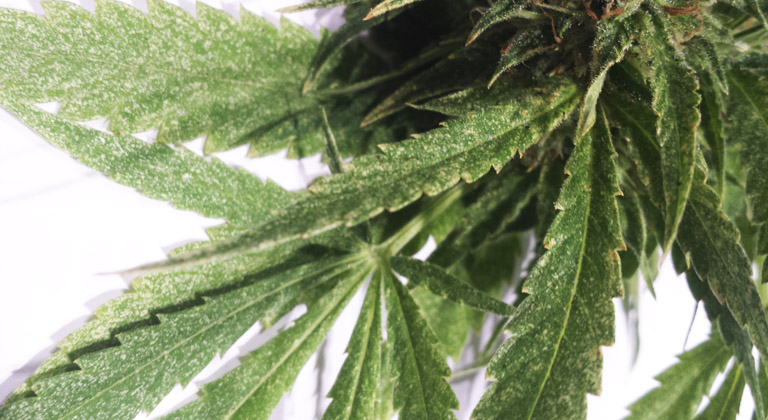



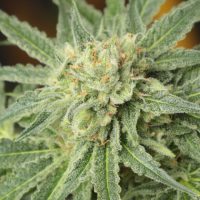


2 responses
Hola hace una semana empecé en la floracion con mis matas canabis y vi que tienen arañas y quería saber que me recomiendan para eliminarlas gracias
Hola,
Durante la etapa de floración de las plantas de marihuana, únicamente podrás usar insecticidas acaricidas biológicos, ya que los sistémicos perduran demasiado tiempo en la planta, por lo que podría ser muy perjudicial aplicarlos durante esta fase. También, y al igual que en la fase de crecimiento, podrás usar predadores naturales para eliminar la plaga.
Insecticidas biológicos para usar durante la floración
Ya que durante la floración es cuando menos conviene que aumente el nivel de la plaga, es importante insistir en los tratamientos que vayas a aplicar, además de aplicarlos correctamente para evitar terceros problemas.
Para combatir la araña roja puedes usar eficaces acaricidas biológicos como Spruzit, con acción ovicida. También puedes combinarlo con jabón potásico, Mobet.
Otro de los acaricidas más demandados, por su gran eficacia, es Plant Vitality.
Observa diariamente las plantas, sobre todo el reverso de las hojas. Para la eliminación de forma manual de adultos, larvas, proninfas y huevos, puedes usar una solución en agua de cualquiera de los 3 productos anteriormente nombrados en la proporción indicada por el fabricante; para ello debes arrastrar los huevos del reverso de las hojas mediante un algodón mojado en dicha solución.
Un saludo,